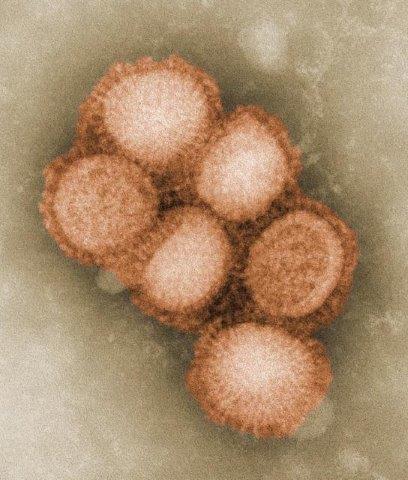EMBARGOED FOR RELEASE | September 08, 2013
A new approach to early diagnosis of influenza
Note to journalists: Please report that this research was presented at a meeting of the American Chemical Society.
A press conference on this topic will be held Sunday, Sept. 8, at 11:30 a.m. in the ACS Press Center, Room 211, in the Indiana Convention Center. Reporters can attend in person or access live audio and video of the event and ask questions at www.ustream.tv/channel/acslive.
INDIANAPOLIS, Sept. 8, 2013 — A new technology is showing promise as the basis for a much-needed home test to diagnose influenza quickly, before the window for taking antiviral drugs slams shut and sick people spread the virus to others, scientists reported here today. In a presentation at the 246th National Meeting & Exposition of the American Chemical Society (ACS), they described how it also could determine the specific strain of flu virus and help select the most effective drug for treatment.
The meeting of the world’s largest scientific society, which features almost 7,000 presentations on new discoveries in science and other topics, continues here through Thursday.
Suri Iyer, Ph.D., explained that such a fast, inexpensive diagnostic test — similar to the quick throat swabs for strep throat and to home pregnancy tests — is especially important for flu, which causes widespread illness and an average of 36,000 deaths annually in the United States alone.
“Just going to the doctor’s office or hospital for diagnosis can be counterproductive during a major flu outbreak,” Iyer explained. “It carries the risk of spreading the disease. During the last swine flu outbreak, hospitals in some areas went on TV to tell people not come to the ER. Not only could they spread the virus, but ERs did not have the facilities to test hundreds of worried people.”
Such a test also is important because antiviral drugs can ease symptoms of the disease and enable people to recover sooner and return to school, work and other activities, Iyer added. But to be most effective, the medications must be taken within two days after symptoms first appear.
Iyer, of Georgia State University in Atlanta, and University of Cincinnati colleague Allison Weiss, Ph.D., launched research on a fundamentally new approach for diagnosing flu and other viral disease because of drawbacks with existing tests. Those tests can produce results in about 15 minutes. However, they are expensive and sometimes come up negative when the patient actually does have the flu. As a result of that uncertainty, the U.S. Centers for Disease Control and Prevention encourages doctors to confirm test results with viral culture, which takes 3 to 10 days. But waiting this long for confirmation shuts the window on antiviral treatment.
Existing flu tests use antibodies that recognize flu virus antigens, proteins on the flu virus’ surface. Iyer and Weiss took a different approach, which involves using carbohydrates to detect the antigens, and has advantages over antibody-based approaches. Flu viruses have two major antigens, hemagglutinin and neuraminidase, which determine the specific strain of flu virus. Changes in hemagglutinin and/or new combinations of hemagglutinin and neuraminidase signal the emergence of a new strain of virus. That happened in the spring of 2009, when the new “swine flu” ignited concerns about a worldwide epidemic.
In the ACS presentation, Iyer explained how the new test technology uses various forms of carbohydrates that can capture the hemagglutinin and neuraminidase, and via a color change or other signal, indicate both infection and the specific type or strain of flu virus. Information on the strain would be important, enabling doctors to pick the most effective antiviral drug. The new approach has other potential advantages, including quicker results, lower cost and greater reliability, he said.
So far, the approach is living up to expectations, with laboratory experiments verifying that it can detect flu viruses. Iyer and Weiss plan to move ahead in the autumn with tests on samples taken from human volunteers. Their vision is for a package similar to a strep throat or pregnancy test that gives an easy-to-read color change.
The researchers acknowledge funding from the National Institute of Allergy and Infectious Diseases, part of the National Institutes of Health.
To automatically receive news releases from the American Chemical Society, contact newsroom@acs.org.
# # #
The American Chemical Society is a nonprofit organization chartered by the U.S. Congress. With more than 163,000 members, ACS is the world's largest scientific society and a global leader in providing access to chemistry-related research through its multiple databases, peer-reviewed journals and scientific conferences. Its main offices are in Washington, D.C., and Columbus, Ohio.
Media Contact
During the national meeting, Sept. 6-11, the contacts can be reached at 317-262-5907.
Michael Bernstein
m_bernstein@acs.org
202-872-6042
Michael Woods
m_woods@acs.org
202-872-6293






